This is the second in a two-part series presented by Saudi artist
Elham Dawsari where she shares her work in the fields of urban design, feminism and social theory as well as speculating on life in a pre-internet Saudi Arabia. In this post, she shares the story behind her sculpture series
Nfah // colloquial dialect; meaning an abundance of fresh air and space. In this installation, Elham examines the relation between urban landscaping and human behaviour specific to Saudi women of 1990s Riyadh and the innate search for open spaces.
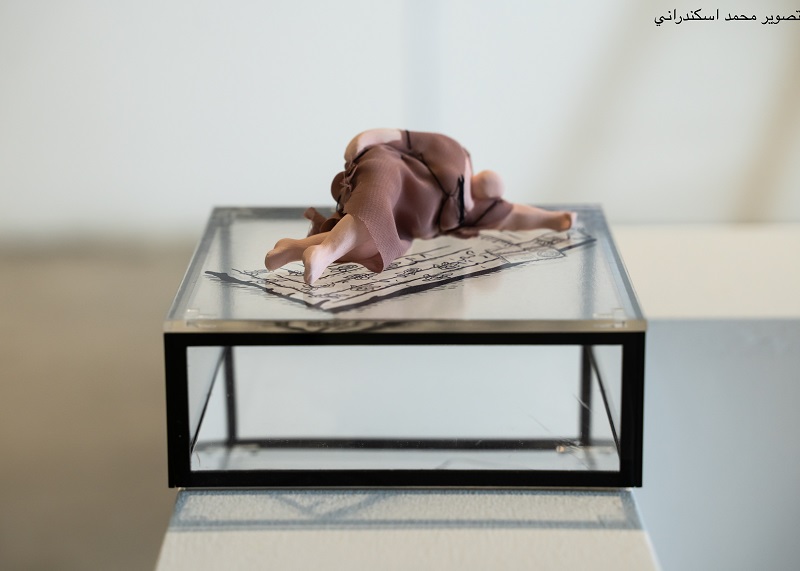 Figure resting in a sunlit living room
Figure resting in a sunlit living roomOn the Lives of Saudi Women
As an artist and writer, I tend to curate the hidden stories of people and places in Riyadh and their relation to each other. More specifically, I analyse the human condition of Riyadh’s pre-internet or marginalised women of middle and lower economic classes, and how spatial, economic and social classifications influenced their lives and behaviours leading to today.
Prior to researching
Subabat, I spent a year studying clay and sculpting figurines. My subjects were socially and economically conservative Saudi women of the 1980s-1990s living in Riyadh. A time where very little of them is photographed, if at all.
I questioned the arbitrary footprint that concrete edifices of the post-oil boom decade left on these women - in the absence of not only street and city life in a heavily conservative Saudi, but also the loss of contact with nature. As many of these women, prior to moving to the city with their families, grew up in the19 50s and 1960s in or around farmlands and ranches in rural towns. They lived in mud houses, with sheep and cattle, snuck into farms, climbed palm trees, ventured to water wells, or even in some regions, met boys by the valley. They had a more natural life and practised a healthier form of mobility.
So, what then, were the effects of the tiled patios and concrete walls endlessly shadowing these displaced women who are now well into their 60s and 70s? Where are they today in a time of openness and opportunity for the succeeding generations? How have they adapted to the hustle and bustle of today’s national rapid growth? More importantly,
who were they back then?
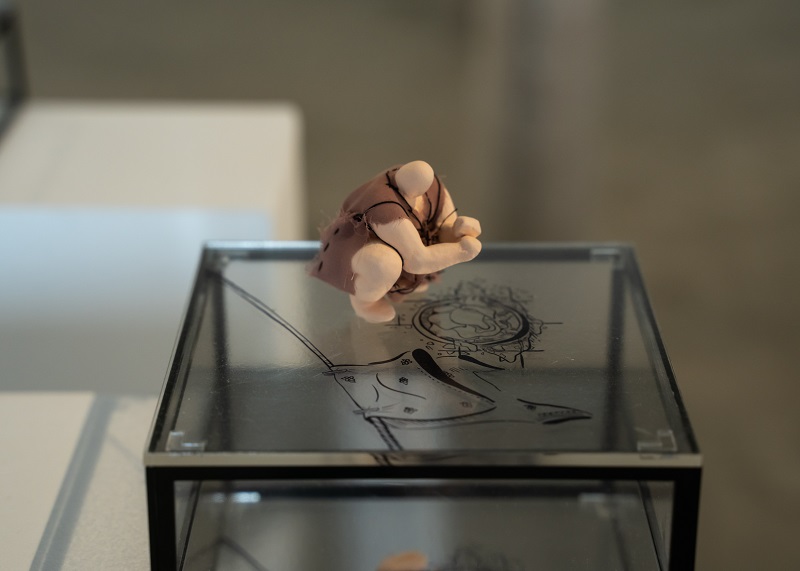 Figure squatting washing laundry
Figure squatting washing laundryConceptualising Art for Saudi Society
These were a generation of women whose adolescent and young adult lives were at the frontlines of a nation in labour; a culture rebirthing itself in a new age. I speculated, ‘
we know today, and are indebted to their grand sacrifices, but do we know who they were before their lives changed forever? Do they?’
For the purposes of exhibiting their stories in a gallery setting, I intentionally sculpted them as nude miniature women, against the art world’s cries of ‘bigger is better’.
Needless to say, it’s still too soon to even symbolically strip them of our social and cultural baggage, or mere fabric. My mother and aunts would cringe at the sight of them in the process, knowing that they were the main inspiration, and would politely suggest I modestly cover them up. The gallery was much stricter. I censored them with chaotically sown black threads holding together sheer fabric. Leaving legs, shoulders and bosoms casually bare for once in a public setting.
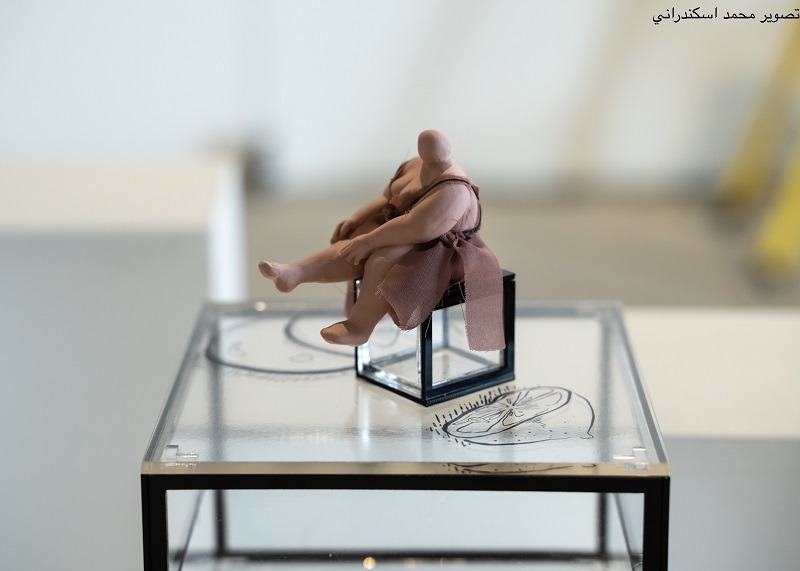 Figure practising beauty and self-care
Figure practising beauty and self-careThe Past is the Present in Disguise
The miniature (semi-covered) nudes served their purpose, as men and women, shyly but intriguingly, kneeled closer to peer into these curvy and sturdy fictional women’s privacy. One visitor in her late 60s, approached the ceramic sculptures as they sat atop concrete columns in an art fair in Saudi. Reserved, she warmed up to me when I joked about one with exposed cleavage. She smiled through her
niqab
Niqāb: (Arabic: face cover), cloth face veil or mask with two cutouts, holes or openings for the eyes. as she diverted and scanned the other sculptures, “You’re right, we were strong and healthy, and could move around and squat for hours, with not a single gym studio for decades.”
The soft curvy yet strong figurines, perform various gendered roles during their daily routines. From squatting for long periods of time washing laundry on the rooftop, and deep lunging while washing the outdoor patio, to beauty and self-care routines inside high-rise concrete blocks. All amidst their innate desire and vocal calls for well-lit breezy spaces. Or, the once common term in colloquial Arabic, “
nfah!”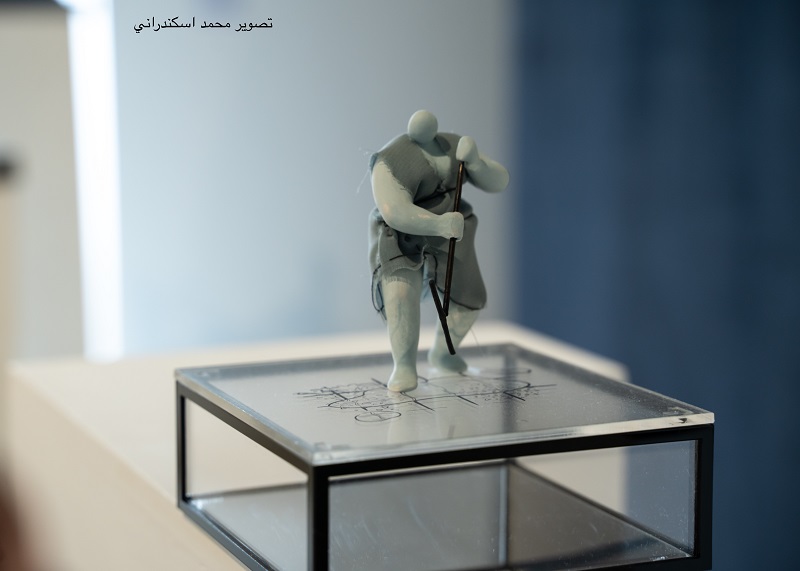 Figure washing the patio
Figure washing the patioAbout the author
ELHAM DAWSARI is a self-taught sculptor, interdisciplinary conceptual artist and writer based in Riyadh, Saudi Arabia. Her work is underpinned by research in the fields of urban design, feminism and social theory as well as speculating on life in a pre-internet Saudi Arabia. Born and raised in the midwest and east coast of the United States, Dawsari moved back to Riyadh when she was in high school in the mid-1990s. A tireless explorer, her need to experience various forms of art expression, coupled with her professional practice in business, journalism, advertising, creative writing and translation, has attributed to her resourceful and holistic approach to art-making as an independent artist.
Dawsari explores the human condition of Riyadh’s 1980s and 90s pre-internet women of middle and lower economic classes, and how economic and social classifications influenced their lives and behaviours. She also focuses on the relation between urban landscaping and human behaviour specific to these women. The artist collects professional and domestic accounts of working and non-working women, and how concepts of money, spatiality and mobility factor into them. As this ongoing study is a personal journey for the artist herself, having grown up in the 90s in Riyadh, she seeks to capture the sentiment in these women’s memories of a visually undocumented, pre-internet time in conservative Saudi households specifically.
The artist deep dives into her family’s own archive of memories, stories and photo albums, as well as resources in literature and text, and conducts one-on-one interviews of her subjects for wider research and documentation. Through her personal research and artwork, she encourages filling in the chasmic gaps of visual and written history as it pertains to Saudi women’s daily lives. She aims to reinstate a generation of older women into the current discourse of a new cultivated Saudi in a proud tribute to the women and girls of a recent past deeply contrasting with today’s thriving and youthful social scene.
Artist Statement - Elham Dawsari
Read more about the sculpture series here.
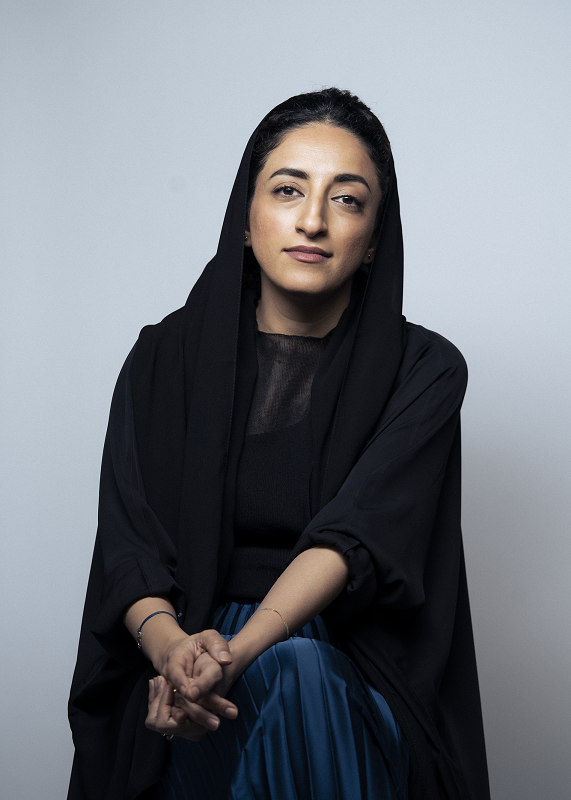 Elham Dawsari
Elham Dawsari
*the copyright to all images belongs to Elham Dawsari. Reproduced here with permission




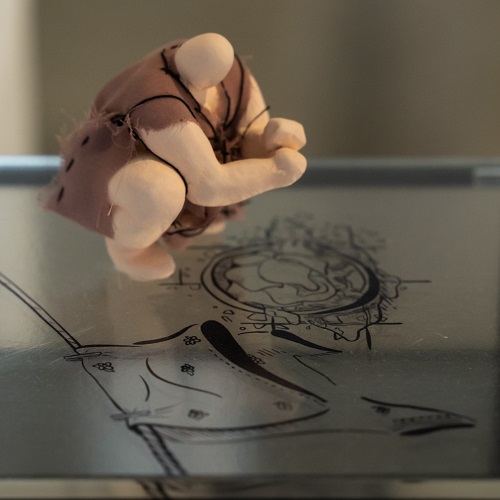
 Figure resting in a sunlit living room
Figure resting in a sunlit living room Figure squatting washing laundry
Figure squatting washing laundry Figure practising beauty and self-care
Figure practising beauty and self-care Figure washing the patio
Figure washing the patio Elham Dawsari
Elham Dawsari